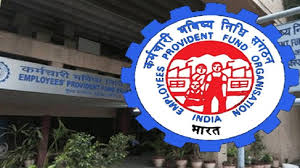Cervical cancer was once a common cause of cancer death for women in the United States.
That’s no longer true — largely due to increased use of the Pap smear.
These exams detect precancerous cells that can be treated before they develop into cancer.
Since human papillomavirus (HPV) causes nearly allTrusted Source cervical cancers, can HPV testing replace the Pap smear as a screening tool?
With the July 30 publication of a new study, the American Cancer Society (ACS) is making some changes to its cervical cancer screening guidelines:
- The age of initial screening is raised from 21 to 25.
- For average-risk individuals, the organization now recommends HPV testing without a Pap test every 5 years as the preferred method through age 65.
- If primary HPV testing isn’t available, an HPV test with a Pap test (co-testing) every 5 years, or a Pap test alone every 3 years is acceptable.
The study suggests that the HPV test, which looks for infection by high-risk types of HPV, is more accurate than the Pap test. It can be done less often and a negative HPV test is linked to low cervical cancer risk.
They also note that the HPV vaccine has been in use for almost 15 years.
The major potential harmTrusted Source of Pap screening is that it can lead to additional procedures that may not be necessary.
Other names for the Pap test are Pap smear, cervical cytology, and liquid-based cytology.
Conflicting research and recommendations
But a July 8 study from Quest Diagnostics and the University of Pittsburgh Medical Center paints a different picture.
The researchers used 9 years of data from co-testing performed by Quest in more than 13 million women.
Among the key findings:
- HPV and Pap testing alone fails to detect twice as many women who develop cervical cancer compared to co-testing.
- HPV testing fails to identify 1 in 5 women who develop cancer when performed within a year of cancer diagnosis.
- More women subsequently diagnosed with cervical cancer within 1 year of co-testing were identified by the Pap rather than the HPV test.
Dr. Casey Cosgrove is a gynecologic oncologist with The Ohio State University Comprehensive Cancer Center – Arthur G. James Cancer Hospital and Richard J. Solove Research Institute.
Cosgrove told Healthline that some cervical cancer screening is better than none and while we’ll always be able to identify differences in testing strategies, the most important thing is that some testing is performed.
“One of the benefits of the old screening strategies was that testing was done frequently. If there was a false negative test or if something were to develop, the interval of time was limited,” he said.
Cosgrove explained that co-testing provides two methods to identify abnormalities and lead to interventions.
“Adenocarcinomas make up about 20 percent of cervical cancers. These originate inside the cervical canal usually, which can make detection more challenging. HPV testing may help us identify more of these, as noted in the [Quest] paper of cytology alone,” he said.
“The paper certainly highlights some challenges to cervical cancer screening and that’s where routine annual visits and monitoring of symptoms and exams can provide additional information to prevent or catch cancers early,” Cosgrove added.
“When we have conflicting data in the medical field, it provides an opportunity for continued investigation and adjustments to recommendations as new data is provided,” he said.
For average-risk women, the United States Preventive Services Task Force (USPSTF) and the American College of Obstetricians and Gynecologists (ACOG) both currently recommend Pap testing alone every 3 years between the ages of 21 and 29.
Between the ages of 30 and 65, the USPSTF recommends screening every 3 years with Pap alone, every 5 years with HPV testing alone, or co-testing every 5 years.
The ACOG recommends co-testing every 5 years as the preferred method or Pap testing alone every 3 years.
Inequities in healthcare
Dr. Lenorre Clarke is an OB-GYN at Riverside University Health System (RUHS) in California.
“The updated recommendations are from the ACS, not the ACOG, which is our governing body,” she told Healthline. “That’s an important distinction. We are not governed by the ACS and OB-GYNs have not changed their practice yet.”
Clarke emphasized that consideration must be given to different populations.
“Here at RUHS we serve a high-risk population, typically in a lower socioeconomic class, that have higher rates of smoking and other factors that affect cervical cancer risk,” she said. “We should look at this with caution, to say the least, and consider how this affects our own patients.”
Dr. Krishnansu S. Tewari is the program director of gynecologic oncology at the Center for Cancer Prevention and Treatment at St. Joseph Hospital in Orange County, California.
Tewari told Healthline there’s good scientific evidence to support primary screening with high-risk HPV-DNA testing.
“But that is best done in a homogeneous population. Our communities in the U.S. are very heterogeneous with respect to risk factors for cervical cancer, access to healthcare, and patient compliance. This may not work as well in the U.S. as it would, for example, in Canada,” he said.
When and how often to screen
Cosgrove said that within the past 10 years, there’s already been a transition from earlier screening to the age of 21.
“This is the next logical step to continue to identify cervical cancer or pre-cancers, and decrease the side effects and anxiety that can be related to an abnormal Pap test. We know that cervix cancer is rare in women before the age of 25. This was already reflected in the ASCCP [American Society for Colposcopy and Cervical Pathology] treatment guidelines,” he said.
Cosgrove explained that most young women exposed to HPV clear the infection. Waiting until age 25 to test will likely give adequate time to clear the virus.
Delaying screening, Cosgrove said, will also decrease the side effects, stress, and follow-up for abnormal Pap tests.
“This will benefit our patients. Having discussions with a care provider and having any concerns evaluated will always be important. New guidelines always present some challenges to both providers and patients,” he said.
Tewari has one concern about raising the age for initial screening.
“It is probably better to get patients into the routine of undergoing screening because it saves lives. Many 21 year olds are still in school and/or on their parents’ health plans, so screening is more readily facilitated. I am concerned that 25 year olds may be less likely to present for screening if they have not already been plugged into the system,” he said.
The greatest risk factor for developing cervical cancer is having never been screened, according to Tewari.
“Although women with lack of access to healthcare, a history of abnormal Paps, cervical dysplasia, anogenital warts, early age of first intercourse, multiple partners, a promiscuous partner, and/or are immunosuppressed are at higher risk than patients without any or all of those risk factors, the bottom line is that risk assessment is complex,” he said.
“We really don’t know all the elements that place patients at risk,” he added.
“Best to screen all people at the recommended age group for screening and to repeat the screening according to evidence-based guidelines. If a patient has no abnormal screening, she may discontinue at age 65,” said Tewari.
Pap, HPV, or co-testing
Clarke said that having access to both tests gives doctors more information.
A person with a positive HPV test can have a normal Pap or one that’s highly abnormal. It makes an important difference in the discussion that follows.
“I’d like to be able to tell a patient they’re at low, intermediate, or high risk. The HPV test alone is limited in stratifying and triaging risk,” said Clarke.
Cosgrove notes that the ACS guidelines highlight multiple opportunities for screening.
“While ACS has recommended HPV testing alone as the preferred method, providers and patients may opt for the other screening methods, especially when HPV testing alone is not available,” said Cosgrove.
“I wouldn’t say that Pap tests are being phased out quite yet. Even in HPV [screening] testing alone, Pap tests can still be an important part of care. There is different information that a provider receives when they perform a Pap test. As such, I think they likely will have a role extending well into the future,” he said.
What you need to know
Whether it’s an HPV or a Pap test, the patient experience is virtually the same, with no added discomfort with co-testing.
“There’s no 100 percent universal rule,” Clarke said.
“The doctor-patient relationship is incredibly valuable. Be honest about your sexual experiences. Doctors ask intimate questions not because we’re interested in your social life but to understand risk factors. Together, you can decide what’s best for you,” she said.
Cosgrove cautions that these screening guidelines apply only to women with normal exams and no symptoms. Make sure you see a doctor if you have symptoms or concerns, he advised.
“While recommendations may be for cervical cancer screening every 5 years with HPV testing, that does not mean that annual health visits with your provider are not important. Annual visits provide the opportunity to address many other issues and health maintenance,” said Cosgrove.
Tewari wants women to know that ovarian cancer can be fatal, so screening is crucial. He also recommends the HPV vaccine for children [boys and girls] between the ages of 9 and 15.
“Cervical cancer needlessly kills over 4,000 women each year in the U.S. It is unfortunate because it is completely preventable,” he said.





































